Your home’s outside drains are highly significant: they ensure water flows away from your house when it rains. This saves your home and the rest of the neighborhood from damage and flooding. Some homes have drains on the outside that can get blocked with different materials. Often, much trash goes down these outdoor drains, which may block the pipes and stop water from getting into the sewers. Most outdoor drains get clogged because of a buildup of organic matter, like mud, leaves, sticks, or other things that don’t belong there. If you think your outdoor drain is clogged with mud, the problem must be fixed quickly and correctly to keep your home, family, and neighbor safe.
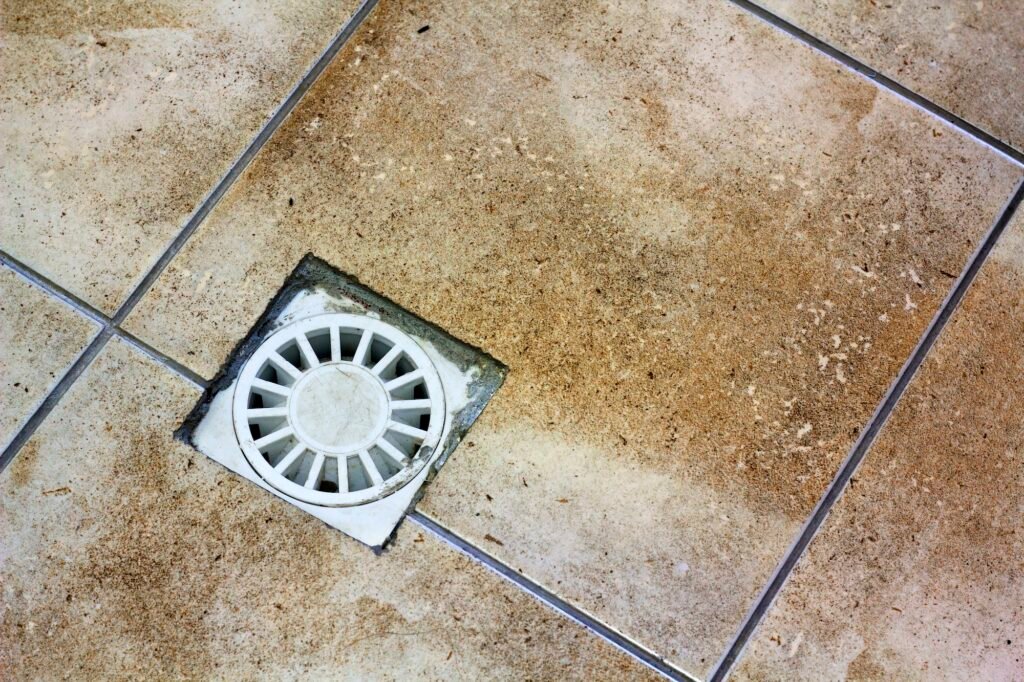
Signs of outdoor drain blockage
If you get the following, you should move as soon as possible:
Blocked drain outside
It can be stopped with leaves and other things from the outside or with coffee grounds or cleaning items from the inside. It might not just be your position to do this.
Clogged outside Kitchen drain
Since an outside kitchen drain that is clogged is not part of the public sewer system, it is your job to clear it.
The outside drain has a bad smell.
The smell of something going bad is a dead giveaway. Looking into it further, you might find all kinds of things stopping your drains.
The outside drain is overflowing.
Again, if your drain is spilling, you know it’s clogged.

Types of Outdoor Drains?
Consider installing an outdoor drain if you have a lot of standing water on your building after a heavy rain or snow runoff. Standing water in contact with your home’s foundation bases can cause structural damage or basement leaks, so it’s a good idea to investigate solutions for various types of outdoor drainage immediately.
4 Types of Outdoor Drains
In addition to potential structural damage, stormwater with nowhere to go may damage your driveway, sidewalk, and garden. Redirecting water and addressing a drainage issue could help keep your cost in the long run.
Various outdoor drains are available, depending on your specific situation and requirements. French drains, dry wells, catch receptacles, and trench drains are among the most common outdoor drainage systems.
Outdoor Drain: Dry Well
Using the gravity flow, a dry well directs water to the lowest point in the premises. However, rather than simply accumulating there, it accumulates in the well before slowly evaporating into the surrounding soil. This is an excellent solution for rainwater from guttering and roof downspouts, greywater capture, and reducing waterlogged soil in low sites of your property.
Catch Basin
Catch basins resemble storm drains found on streets and parking lots. They collect water discharge and direct it to a reservoir or sump pump to transport water from your residence. Typically, they are installed at the lowest point on your property; yet, if you have a big building, you may need more than one to effectively direct the water away.
A catch basin consists of a large underground reservoir fitted with a metal grate to prevent debris from entering the tank. Once the water has been collected in the tank, it can be removed using a sump pump. This is an excellent solution if dirt does not drain well and you have a lot of standing water. Therefore, this may be your best choice if you have thick clay soil.
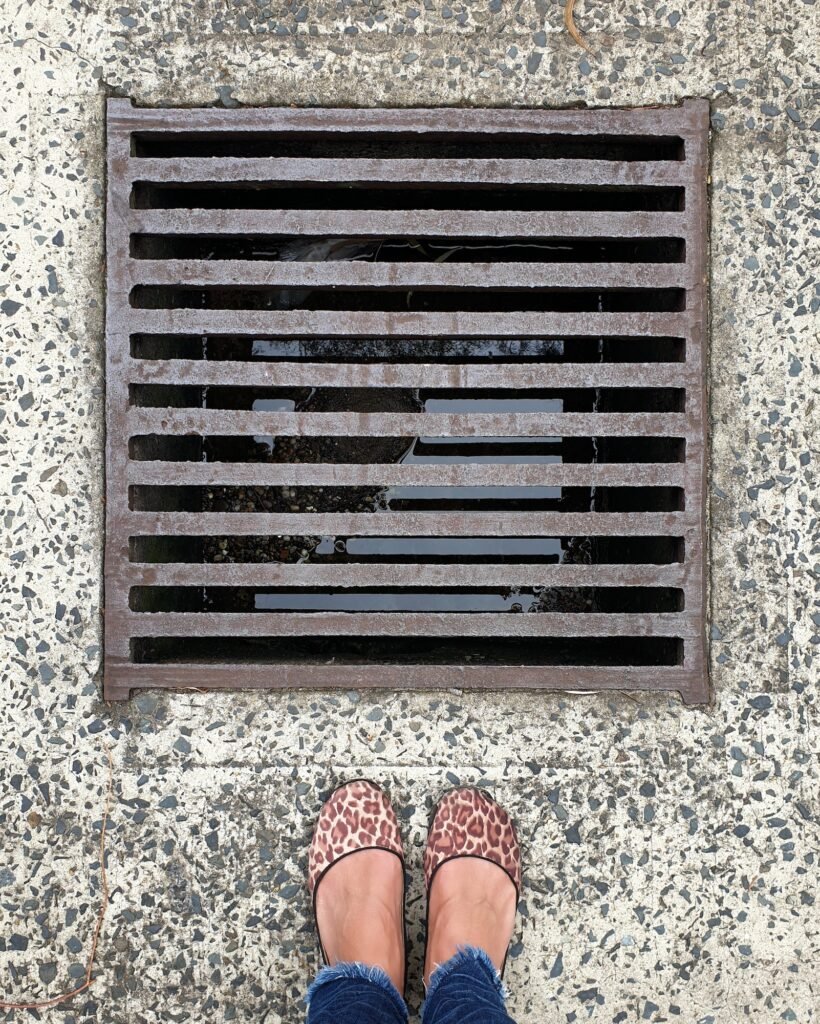
What Is a French Drain?
A French drain is most effective for flat yards where standing water occurs. They consist of perforated pipes installed in a gravel-filled trench around the foundation of your residence. This stops water from accumulating near the foundation, allowing it to drain away from the structure where it cannot cause harm or leaks.
- Different types of piping used in French Drain
Perforated piping should be used for French drains to ensure unimpeded water movement. Perforated PVC (polyvinyl chloride) is readily available and reasonably priced, but other materials can be used.
- Suitable Pipe Size
Pipes of 3 or 4 inches in diameter are appropriate for most residential French drain systems. Larger 6- or 8-inch pipelines may be used, but they are best suited for locations where water must be drained rapidly. The required pipe length may vary depending on the circumstances, but it must be long enough to reach an outlet like a ditch or storm sewer. If this is not possible, the pipe must lead to a sump pump, dry well, or other similar features.
What Is a Trench Drain?
Similar to French drains, the purpose of trench drains is to divert water away from the foundation of your property. However, if the surrounding land slopes toward your property rather than away from it, you should install a trench drain.
A channel drain is similar to a trench drain. Depending on your requirements, it is made of a solid precast material or can be cast in place. This conduit is fitted with a grate to prevent debris from entering. The water enters the trench, constructed to direct the water flow away from your residence and property.
How is the Outdoor Drain Clogged?
- Mud in drain pipes
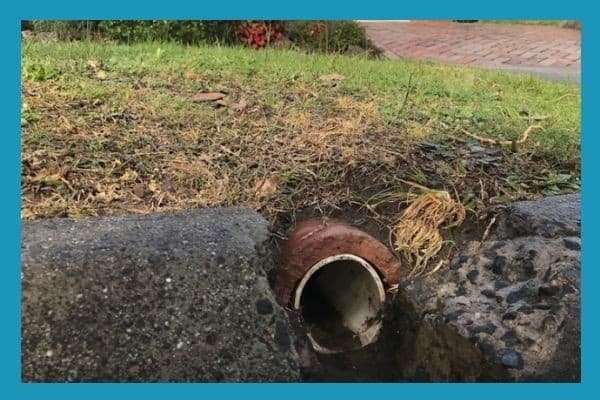
If you want to learn if there is mud in your sink, look for pools of water around your house or yard after it rains if there is debris. Usually, mud will likely stop your outdoor storm drain. This means that the extra rainwater can’t drain away from your home.
If you don’t fix the blocked outdoor drain, it could overflow and cause sewage or other trash to pile up outside your house. If rainwater can’t go down the drain, it will stay in one place and either attract bugs or cause flooding, based on how bad the storm was.
- Blockage with silt
Silt is mineral sediment that can clog the drain if left for long enough. Over time, minerals like silt, calcium, and magnesium will accumulate in the pipes and cause them to get scaled. It makes a clog when it mixes with dirt and leaves from outside and responds to the changing weather.
- Clogging by Leaves and other debris
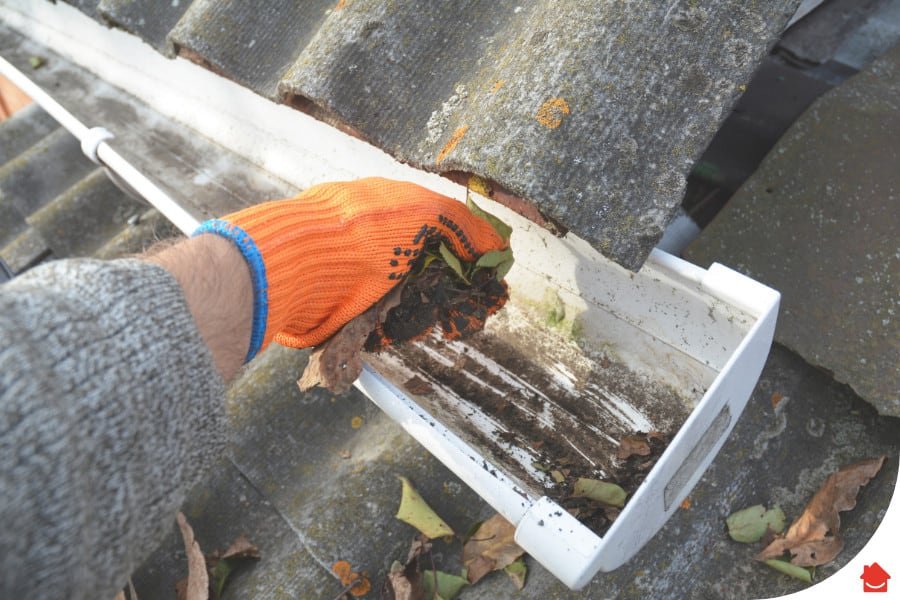
Many people don’t realize that leaves and other garbage from outside can get blown or washed into the drain and cause it to get clogged. This problem often happens when it’s stormy, and it can be made worse by gutters that aren’t clean and gardens that aren’t in order.
It can be hard to stop this problem, but putting a drain guard over the drain openings is one of the best ways to prevent leaves and other outdoor debris from going down your sinks. If the problem comes back, even after you’ve taken steps to stop it (like putting drain covers on the drains and cleaning up the garden), it’s best to call an exterior drainage expert to come and tell you what to do.
- Outdoor drain clogged by toilet paper
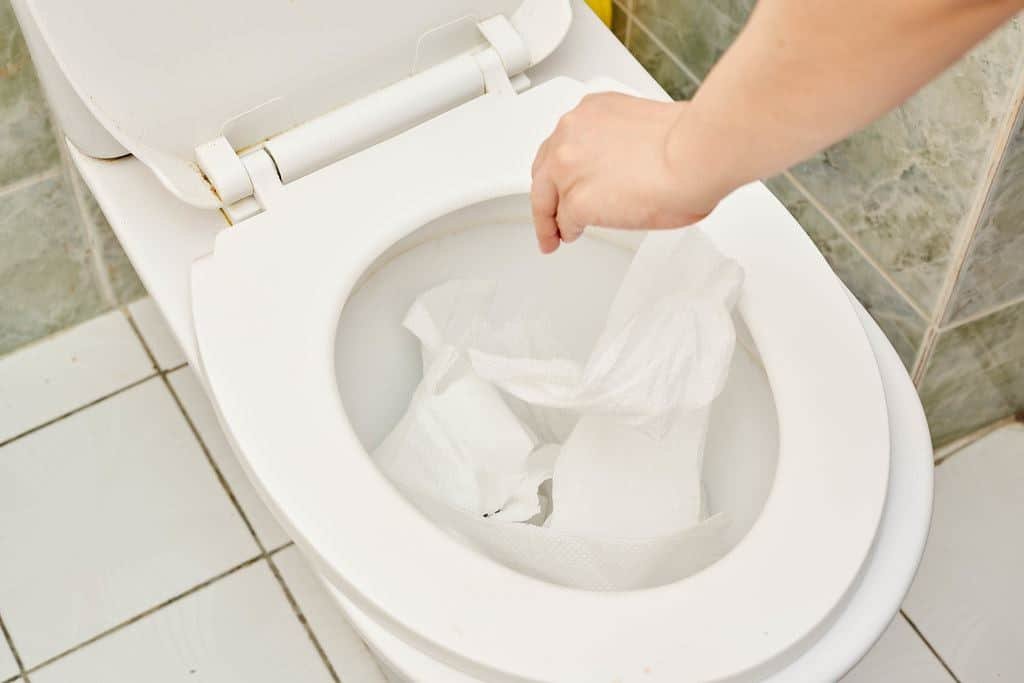
The use of too much toilet paper can clog drains outdoors. Though it has been learned through experience that it is not just toilet paper that creates these blockages. Wet wipes (despite packaging claiming they are “flushable”), grease, oil, and other debris are other typical causes. A clog in the interior drains might dislodge and cause problems in the external drainage.
Ice buildup following a snowstorm or an unexpected temperature change is two other potential causes of a clogged outdoor drain. Roots from trees can warp pipes beneath and cause a backlog.
Effects of Clogged Outdoor Drains
A blocked outdoor drain is comparable to a blocked indoor drain. When leaves clog an outdoor sewer, rainwater has nowhere to go, causing flooding in your yard.
Some severe obstructions may even lead to flooding in your home. Sometimes minor symptoms, such as sluggish water discharge, can lead to significant problems, such as corrosion and flooding. In extreme circumstances, sewage overflow can result in expensive repairs.
It is preferable to address these issues as soon as they arise. It is preferable to take preventative measures now, as warm summer nights change into cold autumn evenings.
Solution
How to Clear a Clogged Outdoor Drain of Mud or Dirt?
If your rainwater drain is clogged with mud or dirt, you might be able to clear it with a few important things you can do at home. Here is a guide that might help with some, but not all, water problems.
Get your tools together.
Since you’ll have to empty the drain by hand, you’ll need rubber gloves and a plastic bag. You’ll need drain rods, bleach, an outdoor hose, and a commercial drain unblocker if nothing else works.
Take the drain cover off.
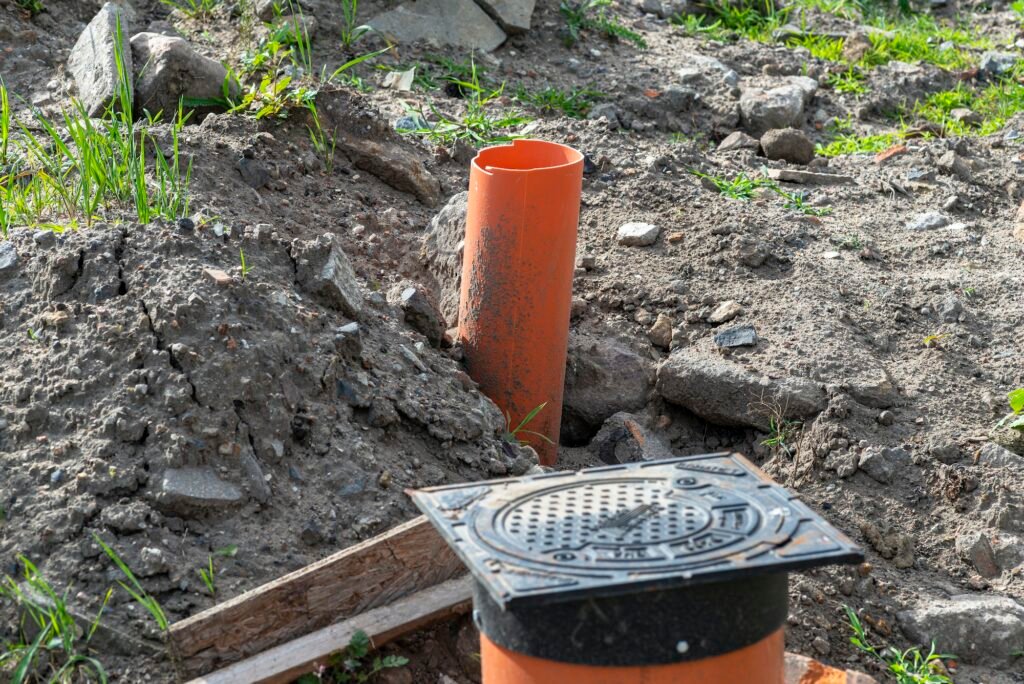
For this part, you might require to use your screwdriver. Just use the tool to pry off the drain cover, but don’t let it fall down the drain. If it’s cumbersome or the screwdriver isn’t helping, try wrapping a rope around the cover to give you more force.
Clear the blockage manually.
To do this, take off the drain cover over the ditch and put it somewhere else so you can work inside. If the drain cover is solid, you must pry it up, not damage it.
Put your hand down into the drain. Scoop and scrape out the trash and put it in a trash can so it doesn’t get washed back into the drain. Keep doing this until you can’t reach any further. If you could eliminate all the clogs, the water should start to flow again.
- Drain rod
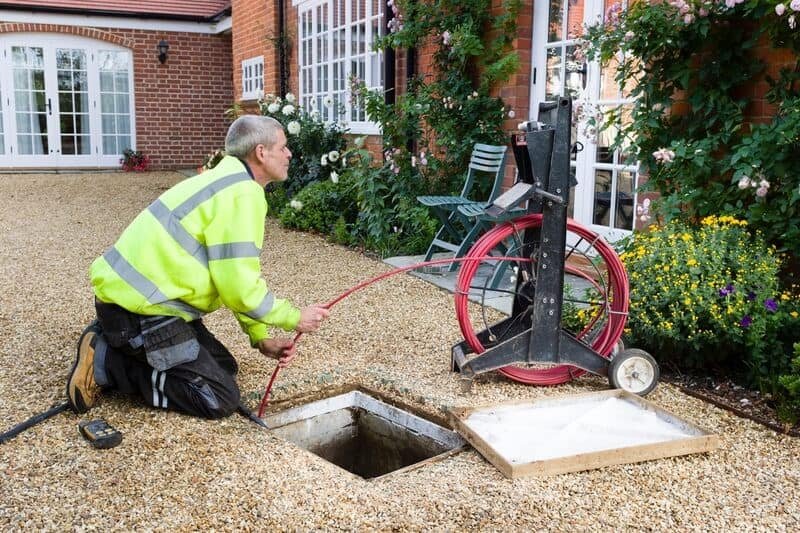

If you have a drain rod or shovel, you might be capable of clearing out a mud-clogged drain outside.
Use the rod to reach into the sink and gently feel around until you find the problem. From there, you might be capable of using it to break up the clogged into smaller pieces and then flush the rest of the problem away with water.
If these solutions don’t work, your drain may have a problem called “root ingress,” which means that roots have grown through the sides of the pipes and are causing paper and solids to build up and cause a blockage. Your drain may also be damaged in some way (if it is cracked, it may have partially collapsed and need to be fixed, or in the worst cases, it may need to be dug up and replaced). It might be effective to say that most clogged drains are easy to handle and can be cleared in half an hour or less.
Problems with using drain rods
Drain rods are great for unclogging drains and washing away, and getting clear of obstructions that might be in the way. But using a drain rod to clear a clogged drain can sometimes be problematic because the rods can get stuck or break into the drain lines.
Learning how to use drain rods and how to adopt them correctly is very important. Once a rod gets stuck, you have the original blockage and a drain rod that won’t move. This means you need to call a plumber.
Plumbers snake

Snakes are bendable rods or wires you put down the drain to clear them. Then, you drill into the blockage and slowly move it out, as you would with a drain rod. They are primarily used for drains and plugholes inside, but you can find stronger ones for sinks outside.
To use a plumber’s snake:
1. Put the snake down the drain.
2. Feel where the blockage is and start turning the crank to drill through it.
3. The obstruction should fall apart. You can put down the water.
4. For pipes outside, drain rods might work better.
Pressure washer
You can clean outside drains with a power washer. The high-pressure jet should push stuff out of the way, but be careful not to pack it in more. Also, some power washers can be used with special attachments for cleaning drains.
Just point the washer in the direction of the drain and fire. If your pressure washer is powerful, you could break pipes, so be careful. If you can change how much pressure there is, start low and increase it slowly.
Pressure Washer: How does it work?
You can unclog the drain with a pressure washer and sewer jetter attachment. The pressure washer does not apply pressure on your pipe but uses high-pressure water to move through your lines and break up buildup. The sewer jet is a long flexible hose with a jet nozzle at one end. The nozzle has jets that fire both forward and backward. On the other end of the sewer jet is a connection that connects to the pressure washer.
High-pressure water from the front-firing jets breaks up clogs in the drain. The jets that shoot backward move the hose through the drain and scrub the sides of the pipes.
Is there a way to fix a clogged outside drain at home?
If you don’t want to buy rods and chemicals to unclog your outside drain, or if you want to try a low-cost answer first, there is a tried-and-true method that uses everyday household items. You’ll need vinegar, bicarbonate of soda, and a cup of hot water. Take off the cap for the drain and pour the boiling water down it. When you mix a cup of baking soda and a cup of vinegar, the mixture should start to pop and bubble. Replace the drain cover, and do it every two hours until the clog is gone. Remember, a simple fix that won’t help with major clogs. Please remember that this simple fix won’t work for significant clogs. For these problems, a drainage worker or engineer must use special tools to unclog drains correctly.
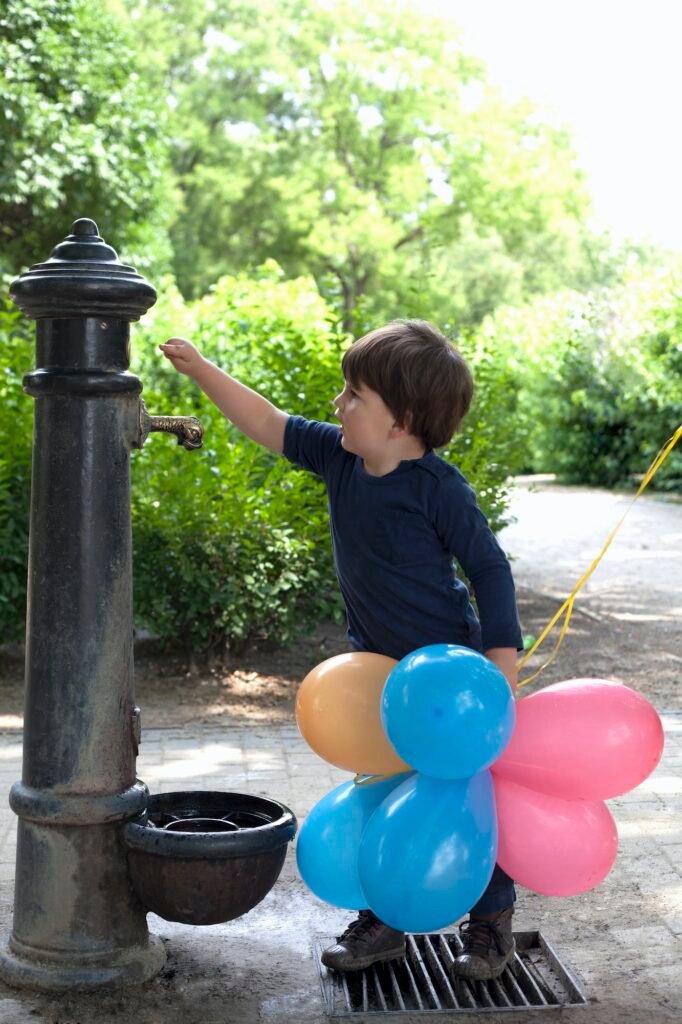
Is Caustic Soda Unclog the Outdoor Drain?
Local stores sell caustic soda at an affordable price as an effective external drain unclogger. Additionally, it is an excellent chemical used to unclog outdoor drainage systems. But how exactly does this chemical unclog drains? Caustic soda is a highly corrosive chemical. It will react strongly with hair, grime, food, and other substances. After the intense reaction, debris will dissolve, leaving only particles behind. Given that the chemical has such a destructive effect on indoor drains, it is apparent what it will do to the debris in an outdoor drain within minutes.
How to Prevent Your Drain from Being Blocked Again?
The outside drain is harder to control, but you can still do various things to keep it from getting clogged.
- First, don’t pour grease, fat, or oil down the drain because they can solidify and stop the pipe and/or drain. This will help if the water from the sink goes outside.
- Put a screen or a dome over the drain to keep big things from going in. Drain screens are grates or meshes that keep leaves and other things from entering your lines. Place the screen or cap over your drain so that it can catch any things that might get stuck.
- •Clean your drain screens after especially heavy storms to eliminate clogs, and snake the drain lines at least once a year to end up any waste that has built up.
- Leaves, sticks, moss, and other types of dirt can get stuck in outside drains, especially if they move around when it rains hard. Keep the area around you clean. If the drain empties the gutters, you should clean your gutters.
- Check the drain regularly. Once a month, clean out the drain so that jams don’t form. Even if your drains aren’t stuck, try to clean them often. If your drain gets clogged often, you should check it often and clear it out. This should stop bigger clogs from happening. Also, make sure that moss doesn’t grow around the drain. If it does, heavy rain will quickly wash it into the drain. If there are big storms, check your drains the day after to see if anything gets stuck.
Cost to clear a clogged drain outside.
Care should be taken when putting rods or other invasive tools down your outside drains and lines, as any damage could cost a lot to fix and make it hard to get to the area. To avoid this, or if your drain won’t unclog, it’s best to call a professional to do the job, which might not be as expensive as you think. On average, a call-out will cost £60, drain rodding will cost £80, drain jetting will cost £175, and a drain CCTV scan for really hard jobs will cost around £250. They will have the tools, knowledge, and insurance to quickly and safely clear out your outside sink. Plus, you don’t get dirty.
Summary
Remember that as the seasons change, and especially when the leaves are going to fall, you need to find a way to keep your outside yard drain from getting clogged! You can use these tips to unclog your outside yard drains and keep them from getting stuck in the future and now.

